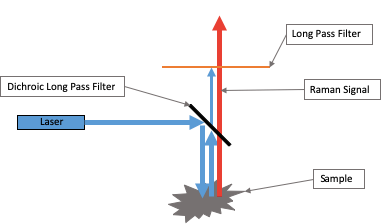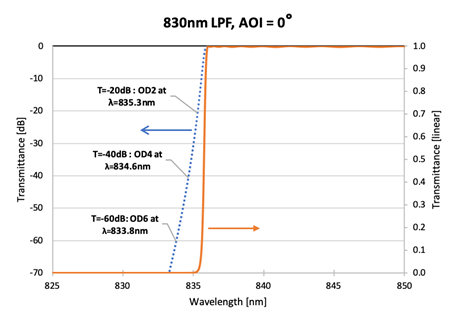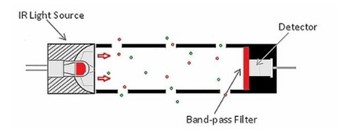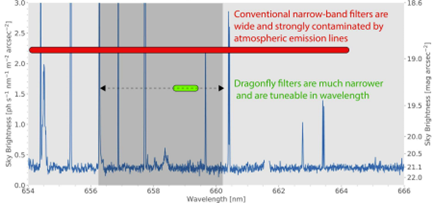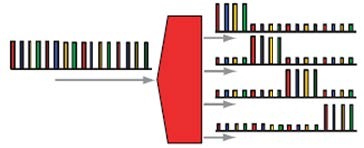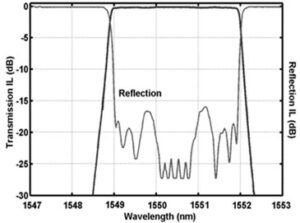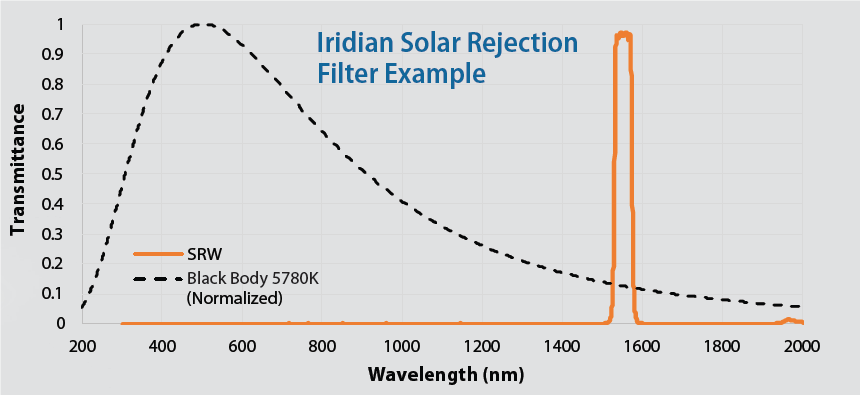What do optical communications, remote sensing, bio/chemical molecular analysis, and astronomy have in common? Each of these applications utilize photonics technologies to select desired information (be it telecommunication signals or images of cells or galaxies) from undesired background noise (be it other communication signal bands or ambient light) by maximizing transmission of light to the photodetector in the spectral band of interest while minimizing the amount of “out-of-band” light that reaches the same photodetector.
Signal to noise ratio (SNR or S/N) is a measure used in many disciplines but is most common in analyzing electrical signals, and is defined as the ratio of the power of signal (desired input) to the power of background noise (undesired input).
In an environment where the signal power “is what it is” (i.e. it can’t be controlled or increased) the path to improving this ratio, and thus the ability to better discriminate the desired information from the undesired background, is to reduce the power of the noise – less background.
Optical filters provide the wavelength selectivity that delivers “more signal, less background” to these, and many more, photonics applications.
One in a million! — Spectroscopy
One of the best examples of the role optical filters play in delivering “more signal, less background” is Raman spectroscopy. In Raman spectroscopy the inelastic scattering of photons that have lost, or in fewer cases gained, energy through interaction with vibrational modes of the sample of interest, provides a unique spectral fingerprint that identifies the molecules present. This non-destructive molecular analysis technique is extremely useful, but challenging to implement since only approximately one in a million photons incident on a molecule will experience Raman scattering and have the associated shift in wavelength whereas the remaining elastically scattered (Rayleigh) photons will still be present in the detection path at the same wavelength as the incident light. The challenge lies in extracting the spectral information (signal) of that one photon from the overwhelming large background signal. Fortunately, high performing wavelength selective optical filters are up to the challenge.
In the detector path of most Raman systems, you will find an optical edge pass or notch filter. As passive components, optical filters can do nothing to boost the weak Raman signal although they can be designed and manufactured to minimize any loss in the Raman signal region (at a longer wavelength than the incident light). Their primary function, however, is to suppress the background noise at the wavelength of the incident light and they achieve this by providing broad and deep spectral blocking of the laser source, often to six or more orders of magnitude, enabling the system to achieve more signal, less background.
You cannot manage what you do not measure — Remote Sensing
The ability to manage and control a system is dependent on the ability to monitor and measure changes in that system over time, thus providing a feedback loop to the control system. In the field of photonics, realization of this principle is seen in applications as diverse as machine vision, and its ability to analyze samples under test, to remote sensing and earth observation (EO) which provide satellite imaging of environmental phenomena, natural disasters such as floods and fire, and the effects of agriculture and forestry practices.
Each of these sensing/imaging applications relies on the spectral difference in transmission, reflection, and absorption of the materials or phenomena (such as gases) under investigation.
In the remote sensing example of non-dispersive infrared (NDIR) gas detection systems, a background measurement of mid-wave infrared (MWIR) light is made and then compared to the measurement in the presence of a gas of interest. Narrow band optical filtering is necessary to ensure that only light from the absorption band corresponding to the gas of interest is present at the detector — more signal, less background.
EO systems consist of a camera/detector seeking to image at a specific wavelength band (or bands in the case of multi-spectral imaging (MSI)) corresponding to the reflectivity or emission associated with the science line of interest. This could be a single oxygen triplet at 777.4nm associated with the presence of lightning or broader spectral bands in the visible/near-infrared associated with different terrestrial objects such as water, rocks, or vegetation (such as ESA’s so called “SENTINEL-2” bands). 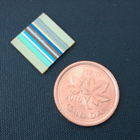 In all cases, the desire is to achieve high contrast – more signal, less background – between the light detected in the spectral band of interest and the background, including ambient light, solar background, and the light from other neighbouring spectral bands in MSI systems. This can be achieved with individual high contrast bandpass filters or a series of filters arranged as a multi-zone filter array providing the wavelength selectivity needed.
In all cases, the desire is to achieve high contrast – more signal, less background – between the light detected in the spectral band of interest and the background, including ambient light, solar background, and the light from other neighbouring spectral bands in MSI systems. This can be achieved with individual high contrast bandpass filters or a series of filters arranged as a multi-zone filter array providing the wavelength selectivity needed.
“A long time ago, in a galaxy far, far away” — Astronomy
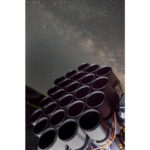 Rather than looking down from the skies as shown with EO, astronomy directs our attention into the great beyond. Searching for pattern and meaning in the night skies can be traced back to many ancient cultures and has given us the named constellations we are all familiar with. The Dragonfly Telephoto Array continues this tradition by probing the skies to attempt to answer one of the biggest astrophysics questions of days; what is the nature and distribution of dark matter?
Rather than looking down from the skies as shown with EO, astronomy directs our attention into the great beyond. Searching for pattern and meaning in the night skies can be traced back to many ancient cultures and has given us the named constellations we are all familiar with. The Dragonfly Telephoto Array continues this tradition by probing the skies to attempt to answer one of the biggest astrophysics questions of days; what is the nature and distribution of dark matter?
Dragonfly does this by using a camera array to look at the image formed by narrow emission lines given off by the diffuse, low surface brightness gas forming the intergalactic medium. To do so it relies on individual very narrow bandwidth (<1nm) optical filters positioned in front of each camera lens to selectively resolve these bands from the background atmospheric and “night-sky” lines. These filters provide much more precise, and angle tunable, wavelength selectivity to each element of Dragonfly’s compound “eye” than conventional astronomical filters providing more signal, less background to this revolutionary telescope.
“Mr. Watson – come here” — Communications
Each of the examples above has used “signal” to mean the image or spectral line associated with a specific phenomenon of interest. Optical filters for communication applications, including terrestrial telecom and datacom and extra-terrestrial satcom, literally facilitate transport and routing of information carrying communication signals.
In terrestrial fiber-optic based communication systems, including long-haul/metro telecom networks, and inside the massive cloud data server systems (datacom) packing as much information onto a single fiber at the same time enables the bandwidth and speed necessary to support the massive amounts of communication data transported – whether for phone, internet, and video streaming by individual users or increasingly communications by and between inanimate devices making up the internet of things.
Wavelength division multiplexing (WDM) associates a given communication transport signal with a given wavelength band on the same fiber at the same time. To accomplish WDM, optical filters are often used to add, drop, and select a specific wavelength signal band of interest from the other signal bands continuing down the network to another user destination or information node. This selectivity can be defined by how many channels are selected without having to skip neighbouring channels to the band of interest – that is a 4 skip 0 filter transmits four signal bands and is steep enough to reflect the next channel band without loss. More selective and steeper filters result in more signal, less background in the network by providing high signal and low-cross talk between signal bands.
100 G DWDM 4s0 band splitter in ADD/Drop module
The same principles of WDM apply in the rapidly growing market of satcom where free-space optical communications connect constellations of satellites in orbit forming an orbiting network above. The optical intersatellite links (OISL) rely on WDM filters to select and direct the signal carrying optical bands from the lasers and to the corresponding detectors albeit after travelling through space between the individual satellites at distances of 1000s of kilometers.
In addition to WDM, specialized optical filters called “solar rejection filters or windows” (SRF/SRW) are also critical components in satcom optical networks. While the WDM filters function to select signals from each other within the telecom signal “C-band” (~1530nm -1560nm), SRF/SRW are the first line of defense in providing more signal, less background, functioning to allow only the C-band wavelengths to enter the satellites while providing broad and deep blocking of ambient/solar background light above and below this relatively narrow signal band. These filters are particularly challenging as they need to provide terrestrial telecom like functionality in a much larger format (often as large as ~100mm in diameter or more versus the tiny 1x1mm fiber-optic filter squares) while minimizing transmitted wavefront error to preserve the signal integrity as it travels over such massive distances.
These are just a few of the many examples of applications that benefit from wavelength selective optical filters and why we at Iridian are proud to work with our customers to design solutions together that allow them to achieve more signal, less background in their systems.

